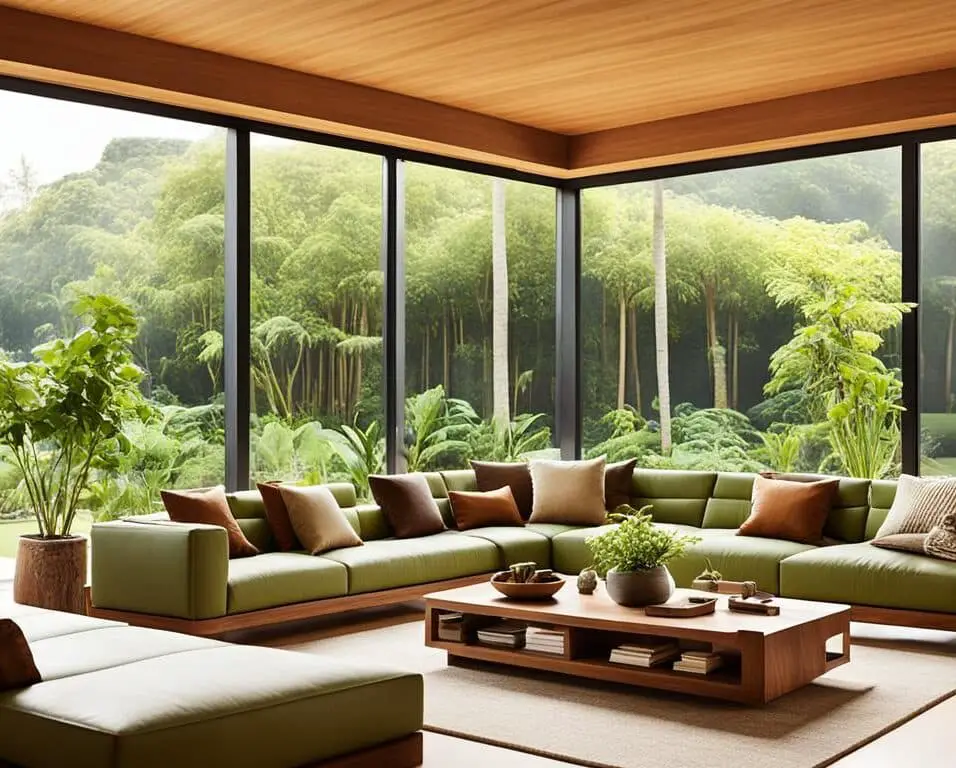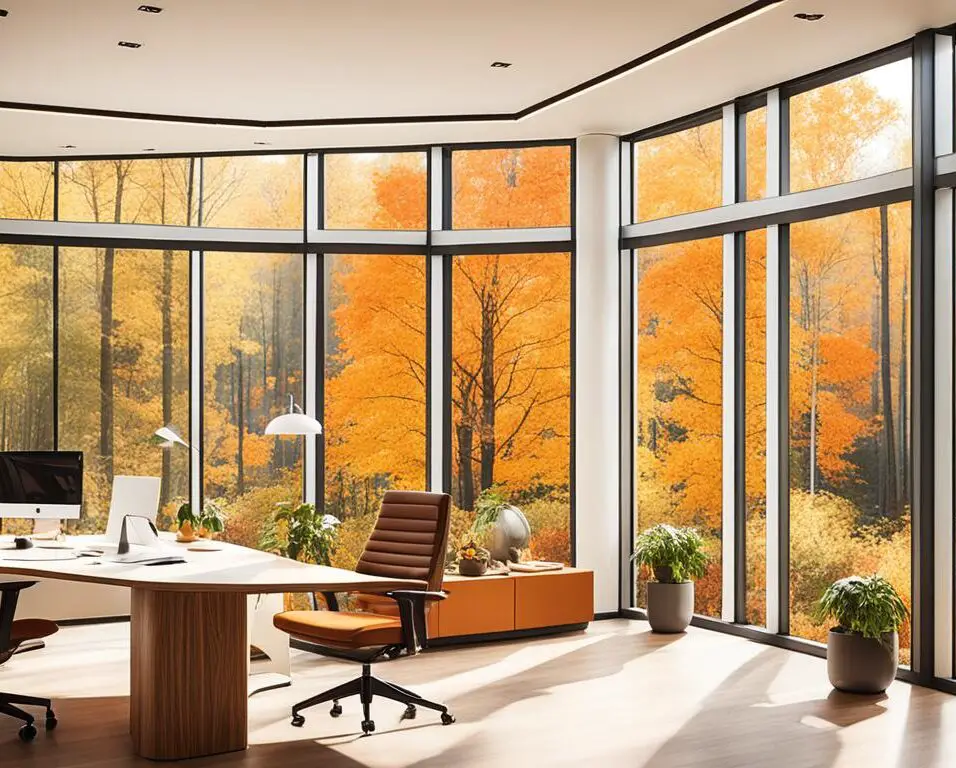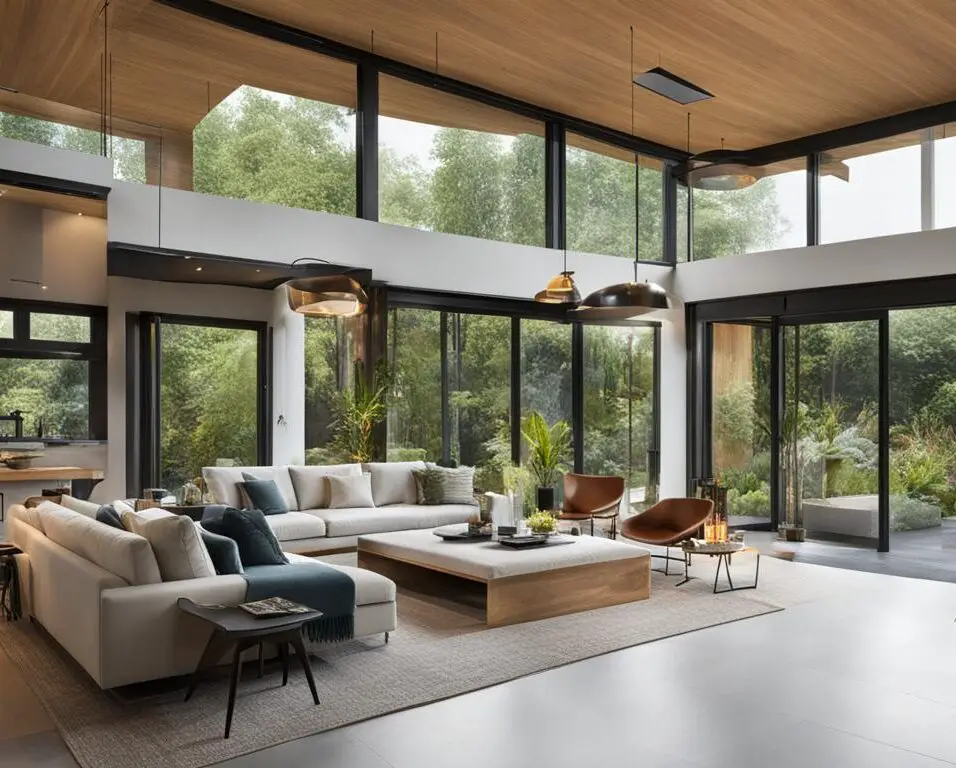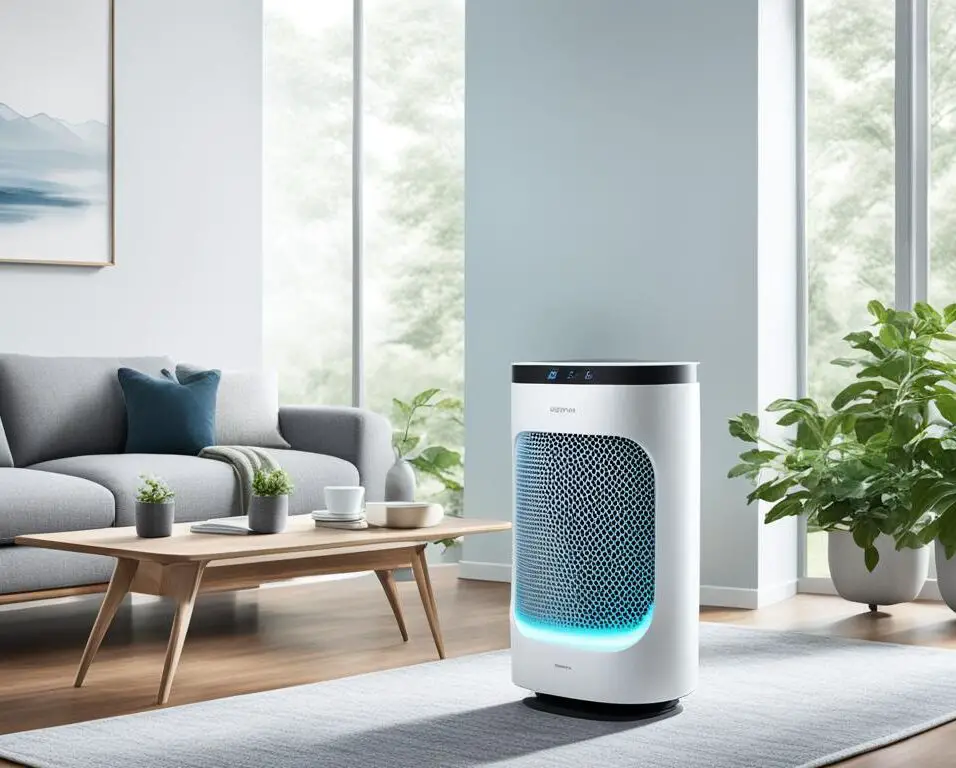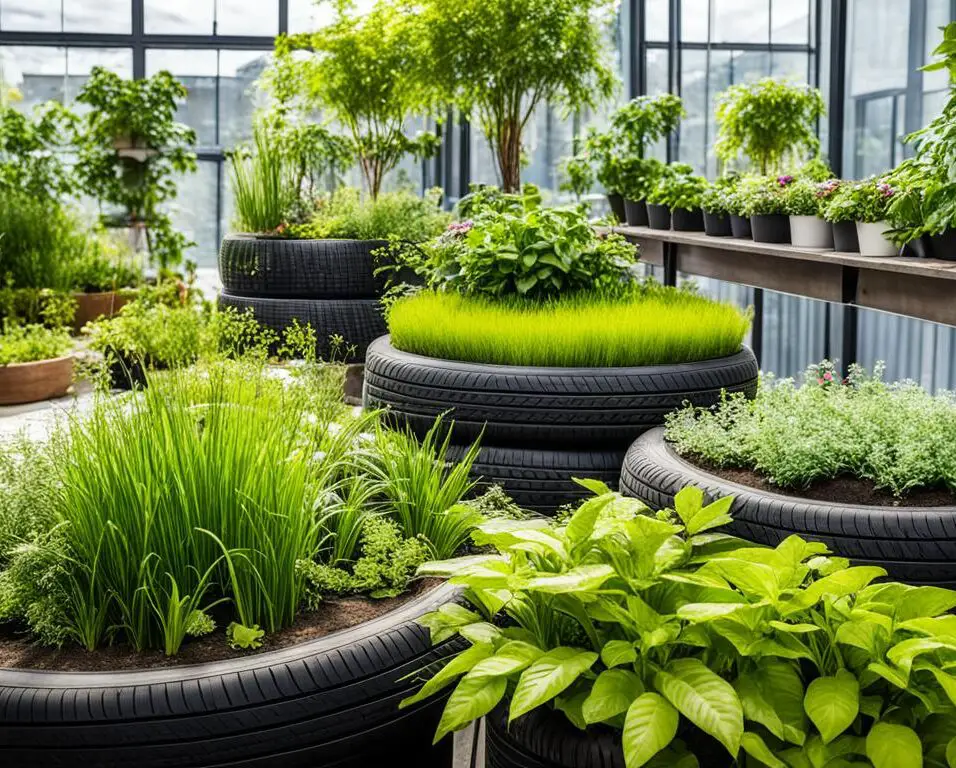Urban Oasis: Implementing Biophilic Design Principles in City Homes
As a professional in the field of interior design, I am constantly seeking innovative ways to create spaces that not only look beautiful but also enhance the well-being of the people who inhabit them. One design concept that has truly captivated me is biophilic design.
Biophilic design goes beyond the traditional incorporation of plants and embraces the idea of creating environments that reconnect us with nature, even in the midst of bustling urban landscapes. It utilizes the core principles of direct connection with nature, natural patterns, and biomorphic forms, and the incorporation of natural elements to bring the soothing essence of the outdoors into our city homes.
Implementing biophilic design principles in urban homes can be a game-changer, transforming our living spaces into nature-inspired retreats that promote a sense of tranquility and well-being. By creating environments that foster a deep connection with nature, we can experience a myriad of mental health benefits, including reduced stress levels and improved mood.
In addition to its positive impact on mental well-being, biophilic design also offers sustainability benefits. By using natural materials and strategically incorporating passive solar strategies, urban homes designed with biophilic principles have the potential to significantly reduce energy consumption while creating beautiful and serene living spaces.
Key Takeaways:
- Biophilic design principles bring the calming beauty of nature into urban homes.
- Direct connection with nature, natural patterns, and biomorphic forms are core principles of biophilic design.
- Implementing biophilic design in city homes promotes mental well-being and reduces stress.
- Biophilic design offers sustainability benefits by reducing energy consumption and utilizing natural materials.
- Urban homes with biophilic design principles can be transformed into serene and nature-inspired retreats.
The Role of Infrared Saunas in Biophilic Design
Infrared saunas play a critical role in incorporating thermal comfort into biophilic design. These saunas are essential elements that seamlessly merge the benefits of nature with relaxation and wellness. Unlike traditional saunas that rely on heating the air, infrared saunas utilize light waves to directly warm the body. This innovative approach offers several advantages, making infrared saunas popular fixtures in biophilically designed spaces.
One of the key advantages of infrared saunas is their ability to provide deep penetrating warmth while using less energy and maintaining lower temperatures. This eco-friendly attribute aligns perfectly with the sustainable nature of biophilic design. By using less energy, infrared saunas contribute to a greener environment.
Moreover, infrared saunas offer numerous health benefits through heat therapy. The deep penetrating warmth stimulates improved blood circulation and cardiovascular health. It can also aid in stress reduction, promoting relaxation and mental well-being. These therapeutic benefits make infrared saunas an appealing addition to biophilically designed spaces, enhancing the overall health and wellness experience.
To fully incorporate infrared saunas into biophilic design, it is essential to consider their placement in relation to natural light sources. Strategically positioning the sauna near a window allows users to maximize exposure to natural light while enjoying the sauna experience. This integration of natural light further enhances the biophilic design concept, synergizing the sauna’s warmth with the calming effects of sunlight.
Overall, the role of infrared saunas in biophilic design is crucial in providing thermal comfort, sustainability, and health benefits. By blending the components of nature and advanced heating technology, these saunas contribute to the creation of harmonious spaces that prioritize well-being and connection with the natural world.
The Impact of Biophilic Design on Health and Well-being
Biophilic design has a profound impact on our health and well-being by creating spaces that reconnect us with nature. It goes beyond aesthetics and incorporates natural elements that contribute to our mental and physical well-being.
Mental Health Benefits
Biophilic design has been shown to have significant effects on our mental well-being. By incorporating natural light, green plants, and soothing elements like water features, it creates environments that reduce stress and improve mood. The presence of nature in indoor spaces has a calming effect on our minds, providing a sense of tranquility and relaxation.
Implementing biophilic design principles in our homes and workspaces can have a transformative effect on our mental well-being. It creates environments that promote a sense of peace and harmony, allowing us to escape the stresses of daily life and find solace in nature’s embrace.
Physical Health Benefits
Biophilic design also has positive effects on our physical health. By utilizing natural materials, such as wood and stone, it improves indoor air quality by reducing the presence of harmful pollutants. Furthermore, incorporating natural sunlight into our spaces allows for adequate Vitamin D intake, which is essential for overall health.
Studies have shown that exposure to natural elements through biophilic design leads to increased levels of physical activity and improved overall fitness. When surrounded by nature-inspired environments, individuals are more likely to engage in activities such as walking, gardening, and other outdoor pursuits, contributing to better physical health.
A Deeper Connection with Nature
Biophilic design fosters a deeper connection with nature, which has a profound impact on our well-being. Spending time in natural environments has been linked to increased happiness, reduced heart rate, and improved cognitive function.
By incorporating aspects of nature into our living and working spaces, biophilic design allows us to experience the restorative benefits of nature even in urban settings. It reminds us of our intrinsic connection with the natural world and provides a source of inspiration and renewal.
The Sustainability Factor
In addition to its health benefits, biophilic design also plays a vital role in sustainability efforts. By reducing carbon footprints and improving energy efficiency in buildings, it contributes to a greener future.
The use of natural materials and passive solar strategies in biophilic design reduces energy consumption and reliance on artificial heating and cooling systems. This not only benefits the environment but also reduces the overall operational costs of buildings.
Implementing biophilic design principles not only enhances our well-being but also promotes a more sustainable way of living, aligning with the goal of creating a healthier planet for future generations.
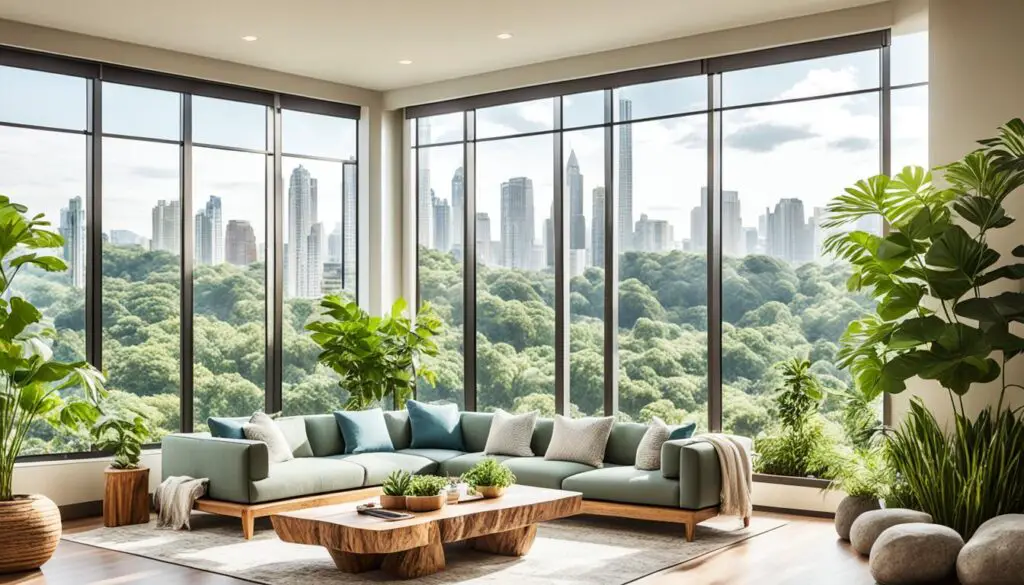
Sustainability Through Biophilic Design
Biophilic design is not only about aesthetics but also about creating sustainable living spaces that take inspiration from nature. By incorporating natural elements into our daily lives, such as wood, stone, and plants, we can significantly reduce carbon footprints and contribute to a greener future. These natural materials not only have a lower environmental impact but also provide a sense of calm and connection with the outdoors.
One of the key aspects of biophilic design is the integration of passive solar heating and cooling strategies. By utilizing the natural energy from the sun, buildings can reduce their reliance on traditional heating and cooling systems, thereby reducing operational energy needs. This not only saves energy but also reduces greenhouse gas emissions, contributing to a more sustainable built environment.
In addition to passive solar strategies, biophilic design promotes natural ventilation systems, which improve indoor air quality while minimizing the need for mechanical HVAC systems. Natural ventilation relies on the flow of fresh air through well-designed openings and can be enhanced by incorporating elements such as operable windows and building orientation. This improves overall energy efficiency by reducing the energy consumption associated with mechanical ventilation systems.
Embracing biophilia and incorporating natural elements into our living spaces not only benefits the environment but also enhances our well-being. By surrounding ourselves with nature-inspired design, we can experience the calming effects of natural elements, which promote relaxation and reduce stress. This connection with nature has been shown to improve cognitive function, creativity, and overall mental well-being.
Incorporating biophilic design principles into our built environment not only creates sustainable spaces but also enhances our connection with nature, ultimately leading to a better quality of life.
Benefits of Sustainability Through Biophilic Design
- Reduces carbon footprints
- Contributes to a greener future
- Improves energy efficiency
- Enhances indoor air quality
- Promotes well-being and reduces stress
The image below showcases a biophilically designed space that seamlessly blends natural elements with a modern aesthetic:
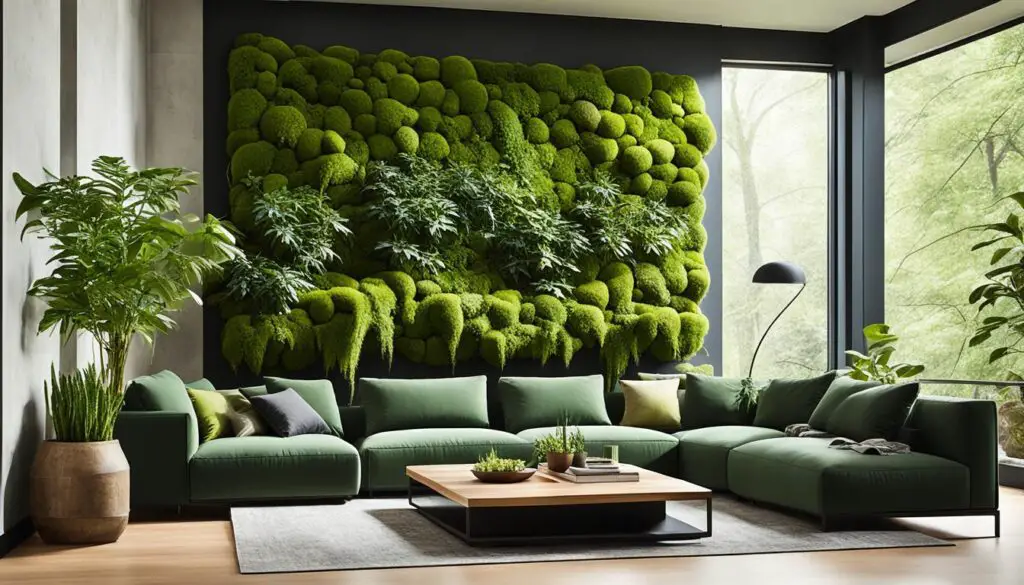
By adopting biophilic design principles and incorporating sustainable practices, we can create spaces that not only benefit our well-being but also contribute to a more sustainable and energy-efficient future.
Conclusion
Biophilic design principles have the potential to transform urban homes into serene and nature-inspired retreats. By implementing direct connections with nature, using natural patterns and biomorphic forms, and incorporating natural elements, such as plants and water features, biophilic design creates environments that promote well-being and enhance both mental and physical health.
Infrared saunas play a significant role in biophilic design, providing heat therapy benefits and contributing to thermal comfort. These saunas use light waves to warm the body directly, offering deep penetrating warmth while using less energy and maintaining lower temperatures. Along with their eco-friendly attributes, infrared saunas improve blood circulation, heart health, and reduce stress, making them valuable additions to biophilically designed spaces.
Additionally, biophilic design offers sustainability benefits by reducing energy consumption, using natural materials, and incorporating passive solar strategies. By embracing biophilia and integrating biophilic design principles, urban homes can become optimal living spaces that foster a deeper connection with nature and improve our overall quality of life. These nature-inspired retreats not only enhance our well-being but also contribute to a greener future.
FAQ
What is biophilic design?
Biophilic design is a concept that brings the calming beauty of nature into our living and working spaces. It goes beyond adding plants and includes creating environments that promote well-being.
What are the core principles of biophilic design?
The core principles of biophilic design include a direct connection with nature, using natural patterns and biomorphic forms, and incorporating natural elements and sensory variability.
Where can biophilic design be implemented?
Biophilic design can be implemented in urban settings, including homes, to create serene and nature-inspired retreats.
What are the mental health benefits of biophilic design?
Biophilic design promotes mental well-being by providing environments with natural light, green plants, and soothing elements like water features, leading to reduced stress and improved mood.
How does biophilic design improve physical health?
Biophilic design improves physical health by using natural materials that improve air quality and incorporating natural sunlight for Vitamin D intake, fostering a deeper connection with nature and reducing heart rate.
What are the sustainability benefits of biophilic design?
Biophilic design reduces carbon footprints and improves energy efficiency in buildings through the use of natural materials, passive solar strategies, and natural ventilation systems.
What is the role of infrared saunas in biophilic design?
Infrared saunas are key elements in biophilic design, providing heat therapy benefits and contributing to thermal comfort while using less energy and maintaining lower temperatures.
Source Links
- https://saunazeit.com/en/biophilic-design-how-nature-inspired-elements-elevate-the-thermal-experience/
- https://www.ied.edu/news/Handcrafted-and-digital-processes-in-design-excellence
- https://skift.com/blog/?tag=design&__hstc=260770770.6fa385653ecd7c9674ba06f08984886d.1705622400357.1705622400358.1705622400359.1&__hssc=260770770.1.1705622400360&__hsfp=2231623282




